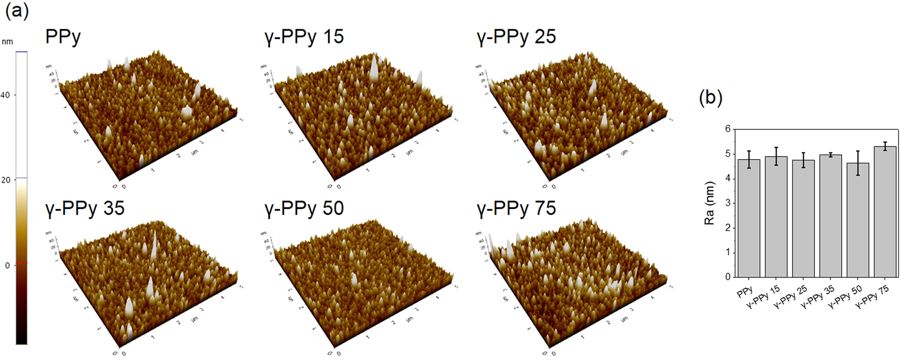In the article «Self-assembled PCBM bilayers on graphene and HOPG examined by AFM and STM” Yanlong Li, Chuanhui Chen, John Burton, Kyungwha Park, James R Heflin and Chenggang Tao demonstrate that PCBM molecules self-assemble into bilayer structures on graphene and HOPG substrates. They used Atomic Force Microscopy (AFM) and Scanning Tunneling Microscopy (STM), and analyzed the observed morphology by comparison to molecular models.*
The AFM measurements were carried out in a dark environment. NanoWorld™ Pointprobe® NCST AFM probes were used in soft tapping mode and simultaneous height and phase images were acquired and reproduced across multiple samples.*
The results of this study shed light on improvement of the energy efficiency in solar cells containing graphene and organic molecules, by increasing the donor–acceptor interface area and could provide valuable insight into fabrication of new hybrid, ordered structures for applications to organic solar cells.*

*Yanlong Li, Chuanhui Chen, John Burton, Kyungwha Park, James R Heflin, Chenggang Tao
Self-assembled PCBM bilayers on graphene and HOPG examined by AFM and STM
Nanotechnology, Volume 29, Number 18 (2018)
DOI: https://doi.org/10.1088/1361-6528/aab00a
Open Access The article “Self-assembled PCBM bilayers on graphene and HOPG examined by AFM and STM” by Yanlong Li et al. is licensed under a Creative Commons Attribution 3.0 International License. Any further distribution of this work must maintain attribution to the author(s) and the title of the work, journal citation and DOI. To view a copy of this license, visit https://creativecommons.org/licenses/by/3.0/


